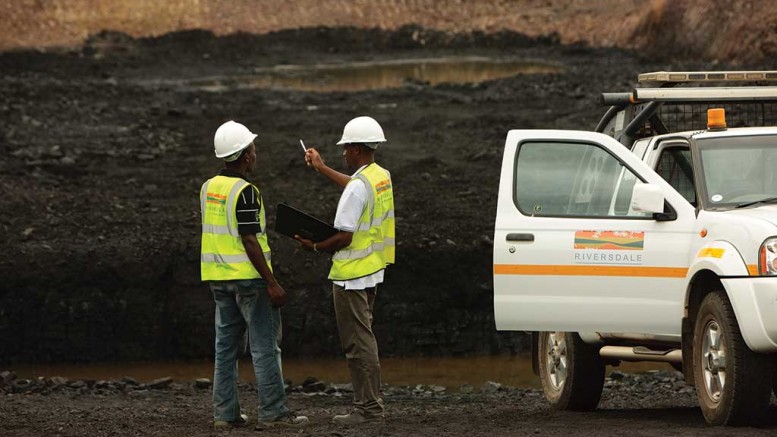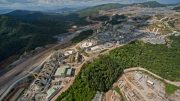In the coming decades, the ability to combine massively reduced greenhouse gas emissions with wider business goals will be the hallmark of successful mining companies.
Climate change is recognized by the Principles for Responsible Investment as “the highest priority ESG [environmental, social and governance] issue facing investors.” It is a key focus for investment research and decision-making and for investor engagement, in particular in sectors such as mining.
Over the past year, a number of mining companies including BHP and Glencore have made commitments to significantly reduce their greenhouse gas emissions. The question for investors is whether these commitments are sufficiently ambitious to support the goal of keeping global temperature rise to well below 2°C.
That has proved a difficult question to answer until recently. Last month the Transition Pathway Initiative, an investor initiative created by the Church of England that is supported by investors managing over US$19 trillion of assets, published a ground-breaking new way to assess the carbon performance of the diversified mining sector.
The TPI uses the Sectoral Decarbonization Approach, which compares companies within each sector against each other and against sector-specific benchmarks representing alignment with international emissions targets.
Some mining products like coal and iron ore generate significant downstream emissions. The TPI includes these in its assessment by adding estimates of Scope 3 emissions from the processing of sold products and the use of sold products (e.g. the burning of thermal coal) to companies’ disclosed operational emissions.
To enable companies to be compared, TPI converts all mining production into a single Copper Equivalent (Cu Eq.) metric. This conversion is based on a three-year average of the ratio between the price of the commodity and the price of copper, which helps to smooth out volatility effects.
TPI has tested its proposed methodology on 10 of the world’s largest mining companies: Anglo American, BHP, Fortescue, Grupo Mexico, Freeport, Glencore, MMC Norlisk, Rio Tinto, Vale and South 32.
The results, summarised below, provide important insight into the performance of the sector and into the way in which investors – following their recent work with the oil and gas sector – are likely to engage with the mining sector.
The ten companies fall into five distinct categories:
Freeport and Grupo Mexico have such low emissions intensities that they are already aligned with the 2050 benchmarks, including Below 2°C. Neither of these companies currently mine products with a high lifecycle carbon intensity.
Glencore (including its trading business) and Anglo American start below the benchmarks, but their emissions intensity pathways are too flat to keep them in alignment with 2°C and Below 2°C in the future. They are only aligned with the Paris Pledges benchmark in 2050.
BHP, Rio Tinto and Vale are not aligned. They begin above the benchmarks, and their targets only cover Scope 1 and 2 emissions, which does little to reduce their overall emissions intensity.
Fortescue and South32 have yet to set credible long-term targets and need to cut their overall carbon intensity by nearly 80% by 2050 to claim alignment with 2°C.
MMC Norilsk does not provide sufficient disclosure to make an assessment of its carbon performance.

Construction at BHP’s Olympic Dam copper-gold-uranium project in South Australia. Credit: BHP Billiton.
In some ways these results are not surprising as they confirm that the carbon performance of mining companies is critically dependent on the mix of commodities in their portfolios. As such, the most obvious decarbonisation strategy companies can adopt is cutting the production of commodities with the highest emissions intensity, in particular thermal coal and iron ore.
We believe it is likely that investors will start to pay even greater attention to the carbon characteristics of companies’ portfolios, both in terms of the associated greenhouse gas emissions and in terms of the contribution that these commodities make to the low carbon transition.
But investors recognise that the issue is not as simple as calling on companies to change their product mix. While renewable energy is an increasingly viable alternative to coal, diversifying away from iron ore is more complicated as, unlike coal, there is no direct low-carbon substitute for steel. Furthermore, reduction in supply from large miners is likely to be offset by increased supply from smaller (potentially less efficient) players.
The TPI analysis points to the wider role that will need to be played by the sector in enabling the low carbon transition. For example, decarbonising the steel sector is likely to need a combination of reducing end demand, greater recycling, improving technology, offsets, and carbon capture and storage. There is scope for miners to play a proactive role, helping to accelerate these initiatives and preferentially supplying efficient (lower-carbon) producers.
The research also provides important insights into the strategies, ambitions and disclosures of the diversified mining sector:
First, while seven companies disclose Scope 3 emissions in some form, the method used to calculate these figures varies significantly. For example, while Freeport discloses a single Scope 3 emission figure covering all categories, BHP reports emissions from the use of energy products separately to emissions from the processing of iron ore and copper, but the equity boundary of these disclosures are inconsistent with the boundaries used to disclose its Scope 1 and 2 emissions.
Second, the types of targets being set differ between the companies. Of the ten companies studied, eight have set targets to reduce emissions, with five aiming to reduce absolute emissions and three aiming to reduce intensity. These targets typically cover different emissions scopes or have different operational boundaries.
Third, no diversified mining company has yet set a target that includes Scope 3 emissions. Stated net zero ambitions from BHP, Rio Tinto and Vale only cover operational emissions, typically just 6% of their total emissions. However, BHP has indicated it will “set public goals on reducing GHG emissions from [their] products even after they have been sold”.
Fourth, company disclosures are not consistent, making it difficult for investors to directly compare commitments and performance. While operational (Scope 1 and 2) emissions reporting is reasonably mature, companies provide limited useful information on their Scope 3 emissions. Furthermore, in setting targets, companies are rarely explicit about the role that carbon capture and storage (CCS) and/or offsets make to overall corporate goals. There remains significant uncertainty as to whether these technologies can scale to meet expected demand. Disclosing the intended contribution of both CCS and offsets will help investors assess the credibility of long-term emissions targets.
In conclusion, the TPI analysis demonstrates the scale of the challenge facing the diversified mining industry if it is to align with the goals of the Paris Agreement. It is likely that, as we have seen in the oil and gas sector, investors will henceforth pay much greater attention to the sector’s carbon performance and will press company management to take action.
It is therefore essential that the sector clarifies how it will respond to the inevitable questions from investors. Companies will need to clarify their current and future emissions (Scope 1, 2 and 3) and set out clear targets and ambitions for reducing all three. They will also need to explain how they intend to reduce these emissions, and the roles that will be played by operational efficiency, by changing their portfolios, by working with their customers and other industry actors, and by offsetting.
While these are significant challenges, they should not be seen as a threat to those companies that respond proactively and thoughtfully. As we are seeing in sectors such as steel, it is possible for industry actors to work together to develop decarbonisation strategies that enable the sector to continue to thrive while making a meaningful contribution to the low carbon transition.
In the coming decades, it is this ability to combine massively reduced greenhouse gas emissions with wider business goals that will be the hallmark of successful mining companies.
— Adam Matthews is co-chair of the Transition Pathway Initiative (TPI) and director of ethics and engagement for the Church of England Pensions Board. Dr. Rory Sullivan is chief technical advisor to TPI and co-founder and director of Chronos Sustainability.






Be the first to comment on "Commentary: Digging deeper into carbon performance in the mining sector"